12 Great Small Towns for Retirement
Don't overlook the big benefits of retiring to a small town.
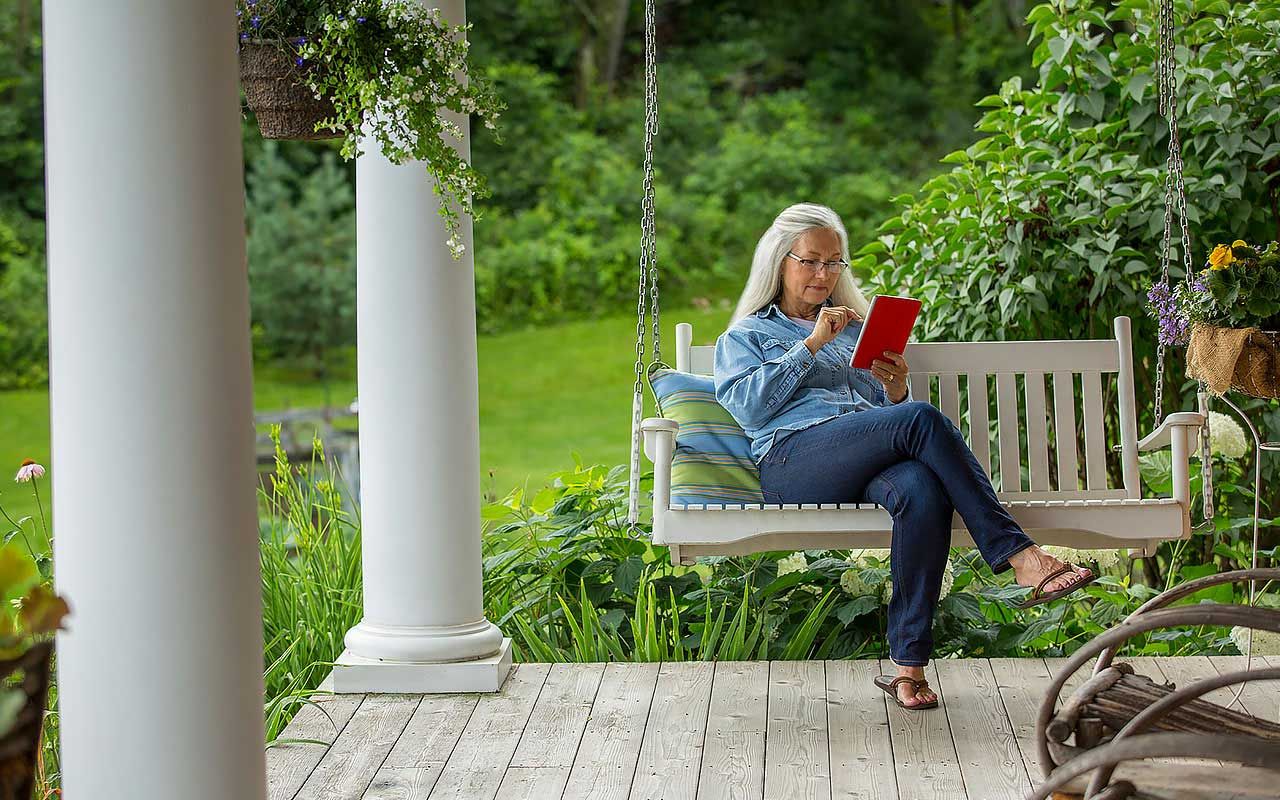

Don't overlook the big benefits of retiring to a small town. On top of the peace and quiet you'd expect, smaller places to live can also offer tight-knit communities, active senior groups and lower crime rates. Plus, many small towns come with relatively low living costs compared with big-city neighbors.
To identify the best places to retire in America—one great retirement city in every state—we favored locales with a good selection of health care facilities, as well as numerous recreational options, above-average median incomes among older residents and other factors critical to retirees. Of those 50 great retirement cities, a dozen have populations under 50,000. Take a look at our 12 top picks for a small-town retirement. Each is worth an extended visit to see if the local vibe and pace of life might be a good fit for your next act.
Disclaimer
The list is ordered by city population, from largest (46,747) to smallest (10,654). See "How We Picked the Best Places to Retire" at the end of the list for details on our data sources and methodology.
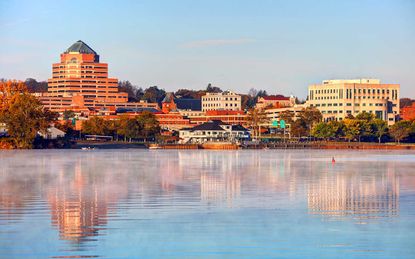
Middletown, Conn.
- City population: 46,747
- Share of population 65+: 14.4%
- Cost of living for retirees: 19.2% above the national average*
- Average income for population 65+: n/a
- Community score: 59.8*
- State's tax rating for retirees: Least Tax Friendly
Like much of the Northeast, Connecticut is known to be a high-cost area, and Middletown is no exception. But the Hartford metro area, of which Middletown is a part, is at least more affordable than other major metro areas in the state, including Stamford and New Haven, according to the Council for Community and Economic Research. And local residents tend to pull in high enough incomes to make it work. The city's average income for all households is $90,977 a year, and it's even better for the older population with incomes for residents age 60 and up averaging $92,851 a year.
Plus, being home to Wesleyan University, Middletown offers all the benefits of retiring to a college town, including numerous restaurants, shops and cultural attractions. You can also take advantage of the Wesleyan Institute for Lifelong Learning, which offers no-credit courses, lectures and other educational opportunities at minimal cost and is open to the entire community. And while the nearby city of Hartford has an alarmingly high crime rate—with 1,093.8 violent crimes per 100,000 residents reported, compared with the national rate of 473.2 for cities of similar size—Middletown is far safer with a mere 49 violent crimes total reported for the year.
*Data for the Hartford metropolitan statistical area, which includes Middletown.
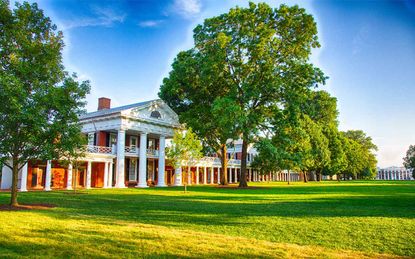
Charlottesville, Va.
- City population: 46,487
- Share of population 65+: 10.4%
- Cost of living for retirees: 0.2% below the national average
- Average income for population 65+: n/a
- Community score: 66.0
- State's tax rating for retirees: Tax Friendly
Renaissance man Thomas Jefferson laid the foundation for the well-rounded city his hometown has become. From his University of Virginia's hollering Hoos to the artists on the downtown promenade, the Charlottesville community is an unexpected blend of Southern charm and liberal edge, a nice choice for a range of retiree personalities. And beyond the college campus and city center, you can find plenty of options for outdoor recreation in the foothills of the Blue Ridge Mountains, including more than 100 miles of of the Appalachian Trail in nearby Shenandoah National Park.
In August 2017, Charlottesville captured national attention when a gathering of white nationalists to protest the removal of a monument to Robert E. Lee turned into a violent rally, injuring dozens of counter-protesters and killing one, Heather Heyer. In general though, the city's violent crime rate is a low 175.4 reported incidents per 100,000 residents, compared with a 297.8 rate for all U.S. cities of similar size, according to the FBI. Charlottesville also ranks fifth for overall well-being, out of all 187 metro areas included in the Gallup-Sharecare Well-Being Index, with above-average scores in all categories, including physical health and resident satisfaction.

Hilo, Hawaii
- City population: 45,703
- Share of population 65+: 18.5%
- Cost of living for retirees: n/a
- Average income for population 65+: $54,503
- Community score: n/a
- State's tax rating for retirees: Tax Friendly
Hawaii is well known for its beautiful beaches, enviable climate and high prices. In Hilo, on the Big Island, the overall cost of living is 36.4% above the national average, according to Sperling's BestPlaces. But at least that's more affordable than capital city Honolulu, on Oahu, where living costs are a steep 101.1% above the national average. The median home value in Hilo is $339,800, according to Zillow—still pricey, to be sure, compared with the U.S. median of $229,000, but much more reasonable than the $676,100 median in Honolulu.
And the local lifestyle is still priceless. The colonial town's mood is quiet and calm, but its location on the eastern coast of the island and near active volcano Mauna Loa offers plenty of opportunities for adventure. You can explore rainforests and waterfalls, as well as Hawaii Volcanoes National Park. In the downtown and waterfront areas, enjoy galleries, shops, restaurants and museums, including the 'Imiloa Astronomy Center.
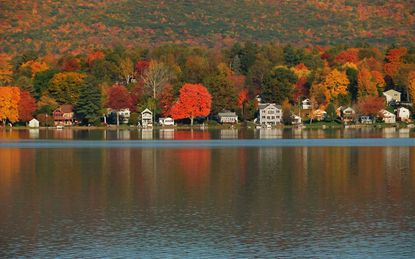
Pittsfield, Mass.
- City population: 43,289
- Share of population 65+: 19.0%
- Cost of living for retirees: 7.9% above the national average
- Average income for population 65+: $58,231
- Community score: n/a
- State's tax rating for retirees: Not Tax Friendly
New England is notoriously expensive, but Pittsfield, located in the western part of Massachusetts, offers a small pocket of relative affordability—more reasonably priced than Boston and Cambridge, where living costs are, respectively, 48.1% and 38.1% above the U.S. average. Housing is notably affordable: The median home value in the city is $173,200, compared with $407,400 for all of Massachusetts and $592,300 for Boston proper, according to Zillow.
Leaf peeping in the fall may be enough to draw you to the Berkshires. But you have plenty to enjoy all year round, including excellent sites for camping, fishing, hiking and skiing. Nearby, enjoy musical performances at the Tanglewood Music Center, the summer home of the Boston Symphony Orchestra. There’s also world-class art at the Clark Art Institute in Williamstown and the Massachusetts Museum of Contemporary Art (MASS MoCa, for short) in North Adams.

Bozeman, Mont.
- City population: 43,132
- Share of population 65+: 8.6%
- Cost of living for retirees: 3.2% above the national average
- Average income for population 65+: n/a
- Community score: n/a
- State's tax rating for retirees: Not Tax Friendly
If you've ever dreamed of retiring to the mountains, here's your chance. Bozeman is in southern Montana, nestled in the Gallatin Valley and surrounded by majestic ranges and national forests. Yellowstone and Grand Teton national parks sit due south of Bozeman. The geography means you have to be comfortable hiking, mountain biking, skiing and backcountry exploring your way through retirement. Hunting and fishing are also popular local activities.
But don't expect total isolation. Montana State University's Bozeman campus is home to about nearly 17,000 students. Exuberant co-eds might not be the neighbors you pictured in your mountain-view retirement destination, but you may enjoy the dining, culture and entertainment options that come with a college town.
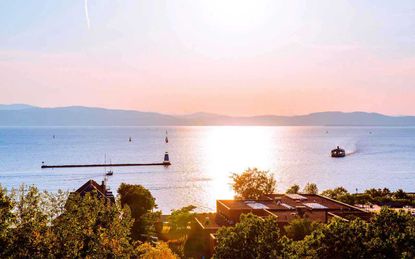
Burlington, Vt.
- City population: 42,453
- Share of population 65+: 10.7%
- Cost of living for retirees: 16.4% above the national average
- Average income for population 65+: n/a
- Community score: 64.2
- State's tax rating for retirees: Least Tax Friendly
This small mountain city on the shores of Lake Champlain is a picturesque setting for tree-hugging retirees. Outdoor recreation is plentiful with miles of hiking and biking paths, nearby beaches where you can swim, kayak or paddleboard in the warmer months, and numerous skiing options in the area. An eco-friendly vibe permeates the town, from the businesses bolstering the city's economy, such as household-products maker Seventh Generation, to the local food movement feeding the neighborhood.
But being green isn't easy on your wallet. Taxes and living costs are high. While the median home value is a low $206,000 in the Green Mountain State, compared with the median $229,000 for the U.S., it climbs to $326,500 in Burlington. A private room in a metro area nursing home costs a median $11,498 a month, compared with $8,365 a month for the U.S. At least you can save money on academic pursuits. The University of Vermont will cover tuition costs for state residents age 65 and older who wish to take a class, even if it's for credit.
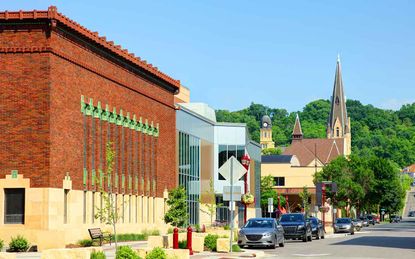
Mankato, Minn.
- City population: 41,241
- Share of population 65+: 11.0%
- Cost of living for retirees: 4.4% below the national average
- Average income for population 65+: n/a
- Community score: n/a
- State's tax rating for retirees: Least Tax Friendly
If the cold winters and equally harsh tax situation don't put you off of the North Star State, consider retiring in Mankato, about 90 miles southwest of the Twin Cities. It's still a small city, but development is on the rise, and the local economy is growing fast. Revitalization projects have added a nice mix of restaurants, shops, entertainment venues and more to the downtown area in recent years, and the city's five-year strategic plan aims to spread that level of development throughout the Minnesota River Valley. Some goals of the plan include adding housing, specifically within walking distance of where jobs and shops are; expanding Riverfront Park and other recreational land; and possibly building a pedestrian bridge that crosses the Minnesota River to North Mankato.
So far, all that growth has yet to push up living costs. While other metro areas in Minnesota come with above-average expenses, Mankato's cost of living for retirees (and others) remains below the national average. By comparison, Minneapolis has living costs for retirees 5.7% above the national average. Unfortunately, typical incomes in Mankato are also lower, with the overall annual income for residents with earnings at $62,776, on average, compared with $64,626 in Minneapolis. Still, the poverty rate for residents 65 and older is lower at 7.8% in Mankato, compared with 12.6% in Minneapolis and 9.3% in the whole U.S.
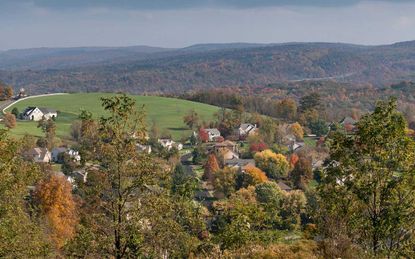
Morgantown, W.V.
- City population: 30,099
- Share of population 65+: 9.4%
- Cost of living for retirees: 7.2% below the national average
- Average income for population 65+: n/a
- Community score: n/a
- State's tax rating for retirees: Not Tax Friendly
West Virginia University offers a number of benefits to older Morgantown residents. If you're age 65 and up, you can take WVU courses, for credit or not, at a discount. Or if you're 50 or older, you can join the local chapter of the Osher Lifelong Learning Institute. A $30 annual membership gets you access to interest groups, trips, social gatherings and program classes, including local and international history, music, computers and yoga.
The University also helps boost local health care services with its many medical facilities, including the Eye Institute, Heart Institute and Ruby Memorial Hospital. The Milken Institute actually credits the area's abundance medical services—including orthopedic surgeons, primary-care clinicians and home-health-care professionals—for contributing to Morgantown's high ranking (18th) among small metro areas.
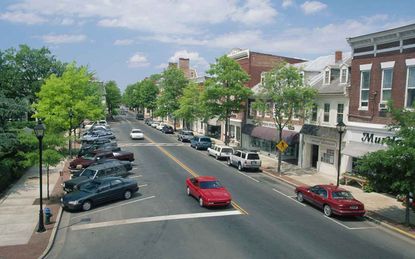
Easton, Md.
- City population: 16,606
- Share of population 65+: 23.5%
- Cost of living for retirees: n/a
- Average income for population 65+: n/a
- Community score: n/a
- State's tax rating for retirees: Least Tax Friendly
On the eastern shore of the Chesapeake Bay, this small town is packed with history, charm and senior residents. You can find a surprising number of eclectic dining options in town, as well as an array of boutique shops, art galleries and other cultural attractions. In fact, in July 2019, Easton was named one of two new Arts and Entertainment Districts in Maryland, joining the 26 existing Districts in the state in offering tax incentives to local artists and creative businesses. Qualifying developers and organizations will get a property tax abatement for artistic-related improvements to their buildings, and local artists can score a state income tax deduction for all art created and sold within the 110-acre district.
And you could use the extra opportunity to save. Maryland is, by and large, a wealthy area, home to a great number of millionaires, and the living costs reflect that. The cost of living for all residents in Easton are 13.8% above the national average, according to Sperling's BestPlaces, which makes it at least more affordable than Annapolis, on the opposite shore of the bay, where living costs are 41% above the national average. And water-loving retirees still have access to the same torrent of activities, such as kayaking, canoeing, boating and fishing, common on the Chesapeake Bay.
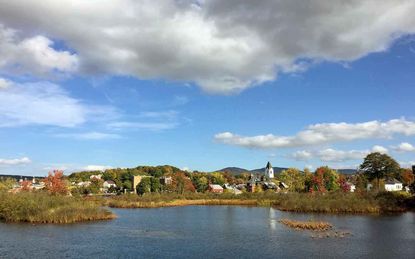
Laconia, N.H.
- City population: 16,237
- Share of population 65+: 20.5%
- Cost of living for retirees: n/a
- Average income for population 65+: n/a
- Community score: n/a
- State's tax rating for retirees: Most Tax Friendly
Tiny Laconia offers a big bargain for your retirement destination. The overall cost of living is 1.2% below the national average, according to Sperling's BestPlaces, making it much more affordable than Manchester—about 50 miles south—where living costs are 13.2% above average. But local average incomes are still high, averaging $71,605 for residents across all ages. That adds up to favorable odds for a balanced budget. And the Granite State's tax situation for retirees is solid, too.
Tucked between Lake Winnipesaukee and Winnisquam Lake, Laconia has been dubbed "The City on the Lake," home city to New Hampshire's Lakes Region. That means plenty of beaches and water-related activities for you in the warmer months. Other outdoor recreation abounds nearby, too. Gunstock Mountain Resort in neighboring Gilford, for example, offers camping, ziplining and snow sports, as well as fairs, events and dining options. Local crime may be worth noting: While the state sports a low rate of 1.99 violent crimes per 1,000 residents, Laconia's rate is 4.68, even slightly higher than the national median of 4 violent crimes per 1,000 residents, according to NeighborhoodScout.com. On the bright side, between 2009 and 2018, there have been only two murders in town, according to the community's police department. The site lists Parade Road-Old North Main Street and Weirs Beach-Lakeport as the safest neighborhoods in Laconia.

Ocean City, N.J.
- City population: 11,328
- Share of population 65+: 29.3%
- Cost of living for retirees: n/a
- Average income for population 65+: n/a
- Community score: n/a
- State's tax rating for retirees: Mixed
The Garden State offers a number of appealing retirement destinations for those who can afford it. Ocean City is a particularly attractive spot, evidenced by the high share of seniors who have already chosen to reside there. Family-friendly beaches, a fun three-mile boardwalk and proximity to Atlantic City are notable draws.
But yes, it's going to cost you. Living costs and taxes are notoriously high all over Jersey. In Ocean City, the cost of living for all residents is a whopping 62.2% above the national average, according to Sperling's BestPlaces. And housing is particularly expensive with the median home value within city limits at a hefty $611,100, compared with $327,800 for the state and $229,000 for the U.S., according to Zillow. Plus, you have to budget extra for insurance to protect against possible storm and flood damage. Note, too, that Ocean City is a dry town, but you don't have to travel far to buy your booze.
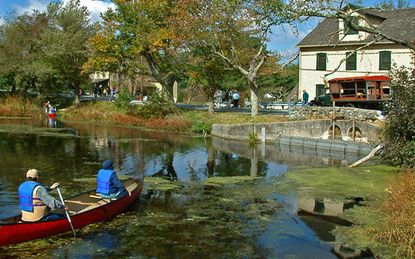
Milford, Del.
- City population: 10,654
- Share of population 65+: 19.7%
- Cost of living for retirees: n/a
- Average income for population 65+: n/a
- Community score: n/a
- State's tax rating for retirees: Tax Friendly
If you're thinking about heading to one of Delaware's popular beach towns for retirement, brace yourself for sticker shock. Better yet, consider instead the more affordable Milford, where overall living costs are about the same as the national average, according so Sperling's BestPlaces. By comparison, the cost of living in popular Bethany Beach, about 40 miles south of Milford and right on the coast, is a whopping 83.2% above the national average. Indeed, median home values in Milford are far lower than in Bethany Beach at $224,500 and $436,100, respectively, according to Zillow.
The small inland city is about 10 miles from Slaughter Beach, so you can still hit the shore with a 15-minute drive. And if you do want to visit the more popular Delaware beaches, it takes about 40 minutes to drive to Rehoboth or Dewey and another 10 to 20 minutes to Bethany. You can also enjoy some waterfront views in town along the Mispillion River. Downtown, there are numerous restaurants and boutiques, as well as the Milford Museum and the Riverfront Theater, where the Second Street Players, a community theater group, produces and performs a variety of shows and hosts movie nights.

How We Picked the 50 Best Places to Retire
To pinpoint one great retirement destination in each state, we weighed a number of factors:
- Cost of living for retirees for major metropolitan and micropolitan statistical areas, with data provided by the Council for Community and Economic Research, includes overall costs, housing, food and groceries, transportation, utilities, health care and miscellaneous expenses.
- Household incomes, poverty rates and number of health care facilities are from the U.S. Census Bureau.
- Community well-being and physical well-being scores are provided by digital health company Sharecare, in collaboration with Gallup. These are two of the five elements of well-being that make up the overall Gallup-Sharecare Well-Being Index. (The other three elements are purpose, social and financial well-being.) The index is calculated on a scale of 0 to 100 and based on more than 2.5 million nationally representative surveys. Community well-being is defined as "liking where you live, feeling safe and having pride in your community." Physical well-being is "having good health and enough energy to get things done daily." We display the community score for each place we chose.
- Population data, including the percentage of the population that is age 65 and older, is also provided by the Census Bureau. The figures are highlighted in these rankings for the benefit of readers, but were not factors in our methodology for ranking the best places to retire.
- Taxes on retirees, based on Kiplinger's Retiree Tax Map, which divides states into five categories: Most Tax Friendly, Tax Friendly, Mixed, Not Tax Friendly and Least Tax Friendly. This information is provided for the benefit of readers but was not factored into our selections within each state.
Get Kiplinger Today newsletter — free
Profit and prosper with the best of Kiplinger's advice on investing, taxes, retirement, personal finance and much more. Delivered daily. Enter your email in the box and click Sign Me Up.

Rapacon joined Kiplinger in October 2007 as a reporter with Kiplinger's Personal Finance magazine and became an online editor for Kiplinger.com in June 2010. She previously served as editor of the "Starting Out" column, focusing on personal finance advice for people in their twenties and thirties.
Before joining Kiplinger, Rapacon worked as a senior research associate at b2b publishing house Judy Diamond Associates. She holds a B.A. degree in English from the George Washington University.
-
 Musk Treasury Access Raises Alarm: Is Your Tax Refund at Risk?
Musk Treasury Access Raises Alarm: Is Your Tax Refund at Risk?Tax Policy Elon Musk's growing power and unprecedented access to sensitive payment systems are raising concerns about tax season impacts.
By Kelley R. Taylor Published
-
 What Vanguard's Massive Fee Cut Means for Investors
What Vanguard's Massive Fee Cut Means for InvestorsVanguard just announced its largest fee cut in the asset manager's history, which is great news for investors. Here's what you need to know.
By Joey Solitro Published
-
 12 Great Places to Retire in the Midwest
12 Great Places to Retire in the MidwestPlaces to live Here are our retirement picks in the 12 midwestern states.
By Stacy Rapacon Published
-
 10 Cheapest Small Towns to Live In
10 Cheapest Small Towns to Live InThe cheapest small towns might not be for everyone, but their charms can make them the best places to live for plenty of folks.
By Dan Burrows Published
-
 15 Reasons You'll Regret an RV in Retirement
15 Reasons You'll Regret an RV in RetirementMaking Your Money Last Here's why you might regret an RV in retirement. RV-savvy retirees talk about the downsides of spending retirement in a motorhome, travel trailer, fifth wheel or other recreational vehicle.
By Bob Niedt Published
-
 The Cheapest Places To Retire in the US
The Cheapest Places To Retire in the USWhen you're trying to balance a fixed income with an enjoyable retirement, cost of living is a crucial factor to consider.
By Stacy Rapacon Published
-
 The Best Places to Retire in New England
The Best Places to Retire in New Englandplaces to live Thinking about a move to New England for retirement? Here are the best places to land for quality of life, affordability and other criteria.
By Stacy Rapacon Last updated
-
 What Does Medicare Not Cover? Seven Things You Should Know
What Does Medicare Not Cover? Seven Things You Should KnowHealthy Living on a Budget Medicare Part A and Part B leave gaps in your healthcare coverage. But Medicare Advantage has problems, too.
By Donna LeValley Last updated
-
 13 Smart Estate Planning Moves
13 Smart Estate Planning Movesretirement Follow this estate planning checklist for you (and your heirs) to hold on to more of your hard-earned money.
By Janet Kidd Stewart Last updated
-
 Ten States With the Lowest Sales Tax
Ten States With the Lowest Sales TaxSales Tax Living in one of the lowest sales tax states doesn't always mean you'll pay less.
By Katelyn Washington Last updated
